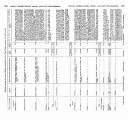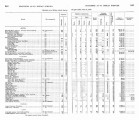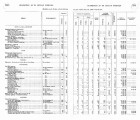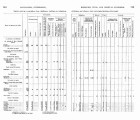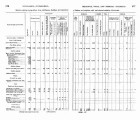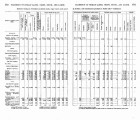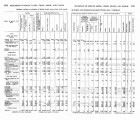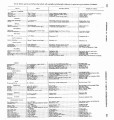| OCR Text |
Show REPORT OF SUPERINTENDENT OF INDIAN SOHOOL8. 471 the emotions. This is simplified in the Italian language becam there we only have the consonants in the beginning of the word. But take the English, and what do we find? Words like these, "late-gomg" and "not." The consonants are on the end of the word. What are we going to do? We must treat final consonants as if they were initial. The consonants are all very well in their places; in fact,,we can not do without them, but they must not be vulgarly conspicuous or they w~l ld estroy the soul of our music. So we should practice such words aa lonely, remember, lately, dearly, tenderly, morning, longingly, oing We are possessed of two sets of rnusc??s in the throat, the extrinsic and the intrinsic muscles. The first are coarse and physlcal ones that only come into use when wedo not have to think much or feel; alm they come into uae to protect our softer, sweeter voice. For instance, if I were walking in a crowded street, such as Broadway, New York, and wished to talk I should have to raise q y yoice. It becomes a dgerent kind of voi-reall ie&ing. Thus I use my extrlnslc muscles. My mtrins~cmua-cles are impressiona%t and can not stay when this harsh tone comes. But let me sympathize with a %end, when the. highei;t and best in me is touched, and when I expresslove, sorrow, 10 ,then these lntrlnslc muscles come mnto3,Is.y. I? the school-room we meet often and'mostly theextrinsicmuscles. The chi1 1s not th~nklngahs e sings; there is no feeling; he seems to be wound u ,and the brute muscles only come into play. Paralyze these muscles by m a s of tgought and bmth, then the deli-cate muscles are brought into use. If we persist in not using, not thinking, our voices are harsh. The resonant cavities of head and chest become closed from non-use, the jaw and lips are stiff, the tongue not agile, and we have a harsh, grinding, buzz-saw voice. more educationally. We oiten forget that singing is the very means b which we can open up the rich mines of the child's nature. In all our work we leal with the mind, but through music we can reach the heart of the child. Little by little, through this art we may he1 each child to erect for himself a high idea, and so develop the good wit'hin him. %$e have the skilled eye and hand, and the active brain, why not cultivate the affections? If children are taught, through the best songs, to love thegood and beau-tiful, will not this help them to choose the good and beautiful in life? We find where ennobling so s are used and where the children feel what they sing, that they have sweet 3 fervent vbices; and where such is the case, we have responsive and obedient children. Let us not forget, amid the drill of our daily work, thrtt we are aipling for some-thing higher than the letter. Indeed, a e must feel that we are nourishing the souls of our children. DRAWING. This aubject was in charge of Miss Fr+ncse E. Ransom, of the New York Training School, and was discussed in an exeeedlngly mterestmg manner. She sald, in part. "Every one has power to draw. Thls m contrary to the thought of many. I ~houldli ke to prove that each one has this power. A miatake of many teachers is that they are trying to begin directly at designing without thenecewry prepanttion. Spontaneous drawing is the natural and logical drawing of primary children. Thk dmwing is the natural expression of childhood. His first ideas he expresses by pic-tures- the circle for the head, one for body, and straight lines extending downward is the child's crude expreesion of the idea of man. By these expressions the child tries to get a hold upon the wo~ld around him. And this is the natrval way the teacher ahould work, from im nation first. "The object to be ohtain2in spontaneous dmwing is the expression of the thought. In story work intuition and tact are needed by the tewher to understand the nature and tendency of each child. In a class of fifty, fifty different ideas may be expressed, each child drawing the expression of his own ideas. |




























































































































































































































